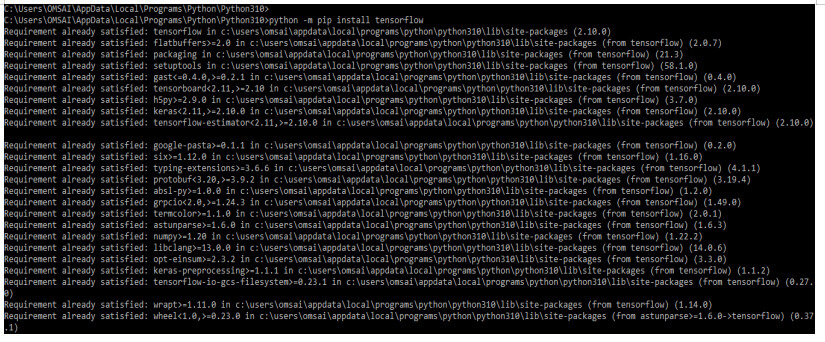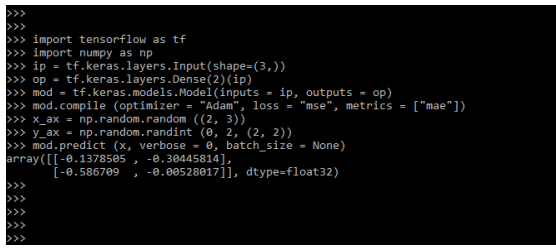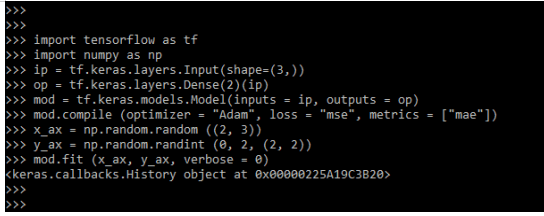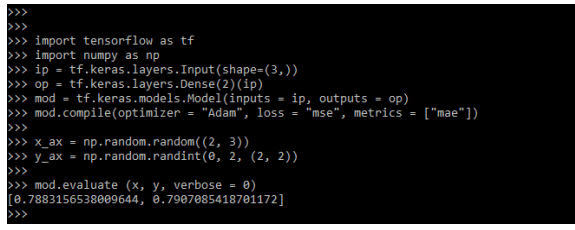Updated March 16, 2023
Introduction to Keras Verbose
Keras verbose defines the mode of verbosity, which will be auto 0, 1, or 2. In this mode, o is defined as silent, 1 as a progress bar, and 2 as a single line per epoch. Auto is defining default as 1 in most cases, except when using 2 with the parameter server strategy in keras verbose.
Key Takeaways
- By using keras verbose we are defining the mode of verbosity. The mode of verbosity zero is defined as silent, one is defined as a progress bar and 2 is defined as a single line.
- We can use verbose arguments in multiple models of keras. We can use a verbose argument in fit_generator.
What is Keras Verbose?
At the time using verbose arguments progress bar is not much use at the time of logging into the file. So we need to recommend using verbose as 2 at the time of running the same interactively. We are using verbose arguments by using different types of keras models. We are defining the verbose zero for the purpose of no logging, we are using one for interval logging and 2 for the logging of episodes.
We are defining the log interval by using verbose if suppose the verbose value is 1 then we are considering the number of steps for a specified interval of time. We are using multiple arguments with keras fir and predict model. We are using keras verbose by using different parameters.
How to Use a Model Verbose in Keras?
We are using different types of models by using keras verbose. In the below step, we are installing the module of tensorflow.
1. In the first step we are installing the model of tensorflow by using npm. Below we have already installed the tensorflow module.
Code:
python -m pip install tensorflowOutput:
2. Now in this step we are installing the keras tensorflow module by using the pip command.
Code:
python -m pip install kerasOutput:
3. While importing the module name as tensorflow, now we are checking whether those models are installed in our server or not by importing the same.
Code:
import tensorflow as tf
from keras.layers import DenseOutput:
4. After importing all the required modules now in this step we are defining the input and output and creating the model.
Code:
ip = tf.keras.layers.Input(shape=(3,))
op = tf.keras.layers.Dense(2)(ip)
mod = tf.keras.models.Model(inputs = ip, outputs = op)
mod.compile(optimizer = "Adam", loss = "mse", metrics = ["mae"])Output:
5. After creating the input and output also define the model now in this step, we are defining the x and y axis.
Code:
x_ax = np.random.random((3, 4))
y_ax = np.random.randint(0, 2, (2, 2)Output:
6. Now in the below example we are defining the fit models of keras and in that model, we are using the verbose parameters.
Code:
mod.fit (x_ax, y_ax, verbose = 0)
assert all(float(m.result()) for m in mod.metrics)Output:
Keras.fit_generator() Syntax
The keras fit_generator is a machine learning library which is used to train deep learning and machine learning models. Below syntax shows fit_generator as follows:
Syntax:
fit_generator(object, …..
initial_epoch = 0, verbose = option)Below is the argument description of keras fit_generator as follows. It will show a detailed description of each parameter.
- Object – This will define the keras object model.
- Generator – This will define the generator whose output will list from the target inputs. The single output of the generator will make the single batch and all arrays from the list. The generator is expecting the loop over of infinite no times. It will not return or exit.
- steps_per_epoch – It will specify the total number of steps which was taken from the generator, so one epoch is finished and the next will be started.
- Epochs – This is defined as the integer and number of epochs for which we want to train the model.
- Verbose – It will specify the mode of verbosity. We are defining 0 for silent, one for the progress bar, and two for one line per epoch.
- Callback – This is defined as a list of callback functions which was applied at the time of training our model.
- validation_data – It is defined as a target list. This is defined as sample weights that were used to evaluate metrics and loss for the model.
- validation_steps – While defining validation_data in the generator at the time using in fit_generator.
The below example shows how we can use the keras fit_generator model. We are using a verbose argument in it.
Code:
mod.fit_generator (dataAugmentaion.flow (trainX, trainY, batch_size = 32, verbose = 0)Output:
Model.Predict() in Keras Verbose
This method is used to generate output by using sample input predictions. Computation is done by using batches. This process is designed for processing a large number of inputs. This is not intended to use inside the loops for iterating the data on a small number of inputs. For the small number of inputs that fit into a single batch. We pair the individual model for calling the tf.function for additional performance inside the inner loop.
The below example shows how we are using the predict method as follows. We are using a verbose parameter in it.
Code:
import tensorflow as tf
import numpy as np
ip = tf.keras.layers.Input(shape=(3,))
op = tf.keras.layers.Dense(2)(ip)
mod = tf.keras.models.Model(inputs = ip, outputs = op)
mod.compile (optimizer = "Adam", loss = "mse", metrics = ["mae"])
x_ax = np.random.random ((2, 3))
y_ax = np.random.randint (0, 2, (2, 2))
mod.predict (x, verbose = 0, batch_size = None)Output:
Examples of Keras Verbose
Given below are the examples mentioned:
Example #1
In the below example, we are using the fit model as follows.
Code:
import tensorflow as tf
import numpy as np
ip = tf.keras.layers.Input(shape=(3,))
op = tf.keras.layers.Dense(2)(ip)
mod = tf.keras.models.Model(inputs = ip, outputs = op)
mod.compile (optimizer = "Adam", loss = "mse", metrics = ["mae"])
x_ax = np.random.random ((2, 3))
y_ax = np.random.randint (0, 2, (2, 2))
mod.fit (x_ax, y_ax, verbose = 0)Output:
Example #2
In the below example, we are using evaluate model as follows.
Code:
import tensorflow as tf
import numpy as np
ip = tf.keras.layers.Input(shape=(3,))
op = tf.keras.layers.Dense(2)(ip)
mod = tf.keras.models.Model(inputs = ip, outputs = op)
mod.compile(optimizer = "Adam", loss = "mse", metrics = ["mae"])
x_ax = np.random.random((2, 3))
y_ax = np.random.randint(0, 2, (2, 2))
mod.evaluate (x, y, verbose = 0)Output:
FAQ
Given below are the FAQs mentioned:
Q1. What is the use of keras verbose argument?
Answer: This model is used to define the mode of verbosity. We can use this argument in any of the models in keras.
Q2. Which model we are using to define the verbose argument in keras?
Answer: We are using fit, predict evaluate, and other model to define the verbose argument in keras.
Q3. When we call the fit function and use verbose arguments in it?
Answer: Basically entire training set will fit into the RAM. We can use verbose arguments in the fit method of keras.
Conclusion
We are defining the log interval by using verbose if the verbose value is 1 then we care considering the number of steps for a specified interval of time. Keras verbose is defining the mode of verbosity, it will define the auto 0, 1, or 2 modes.
Recommended Articles
This is a guide to Keras Verbose. Here we discuss the introduction, and how to use a model verbose in keras. examples and FAQ. You may also have a look at the following articles to learn more –













